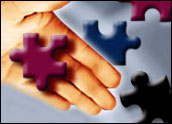
Last week, I dropped off my Prius at the dealership for routine service, as I’ve done regularly since I bought the car in 2007. After getting the requisite paperwork handled, I ambled over to the shuttle stop for a ride home.
“Where you headed?” barked the driver, never raising his head from his newspaper. I recognized him — he’d driven me back and forth from the dealership on numerous occasions, and we’d had many interesting conversations about airplanes and about our mutual hometown of Alameda, Calif.
When I let him know where I was going, he immediately recognized me and his demeanor changed entirely — in fact, as the shuttle started rolling, he asked what I did for a living. I tried to explain CRM — that it was a discipline enabled by technology, and that in part, it was an attempt to take the familiarity of the relationship between a small business owner and his customers and scale it up, so a big business with multiple touchpoints to the customer can deliver a similar, familiar experience. It provides a sort of automated extension of memory, allowing the business to keep track of more details about more people and customers.
Light Bulb Switches On
At that, Bob the driver changed his expression again. “Man — I’m blowing it!” he said. “When you got in the car, I didn’t even look up — I just said ‘where you headed?’ like I always say! If I started looking up, I could use what I know about the people I drive…”
Bob got it — and here’s why. He has the capacity for self-examination and, thus, self-correction. He wasn’t aware of the idea of CRM, but he clearly has a desire to provide an optimal customer experience — and in hearing the idea of customer data and its use in delivering better customer experiences, he realized he could improve.
In the Dark
Unfortunately, a lot of companies don’t have Bob’s ability to look at their own performance in the CRM department and make adjustments to their processes. Although every business likes to say it’s customer-centric, the reality is that it’s easy to slip back into fixating on the business-centric processes that drive most of our daily activities — just as Bob had slipped into less customer-centric behavior.
Worse, business leaders tend to reward employees for tending to the business-centric processe, while there’s a tacit assumption that the customer-centric processes will take place on their own. What’s measured and incented happens; the same can’t be said for things that are assumed to be part of the job.
Creative Force
Keeping the emphasis on the customer requires constant attention — and a commitment to it at the very top. Leadership needs to find ways to incent an emphasis on the customer, and that requires creativity.
Creativity today doesn’t necessarily mean thinking everything up on your own — this is where collaboration is hugely useful. The employees who are closest to customers are probably your best sources of ideas for changes to your processes that will help them deliver better customer experiences and keep on delivering them over the long haul.
And it wouldn’t hurt to have more employees like Bob working for you — people who are genuinely concerned with delivering great experiences to customers — and aware enough to realize when they should change their ways.






















































Interesting insight, Chris. I agree that companies need to tap their front-line employees. There is a wealth of ideas and information there that is often underutilized; ironic, since it is the customer-facing employees who are closest to the customers and have most of the customer touchpoint experiences.
A lot of companies continue to struggle with their customer service performance, often spending a ton of money on branding and marketing initiatives, only to see customers pack up and leave for greener pastures (or at least the hope of finding greener pastures).
In this environment of seemingly ever-increasing product/service commoditization, more and more companies are discovering that they can differentiate themselves by providing a superior customer experience and building loyalty out of the value the customer receives from the quality of that experience.
Customer-facing employees must have the right skills and behaviors to create the optimal experience, but if they have those skills and demonstrate those behaviors, great customer experiences naturally follow, along with sustainable loyalty … and that means increased profits.
Scott Heitland
Principal | Pretium Solutions
http://www.pretiumsolutions.com